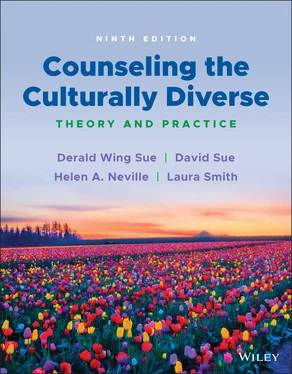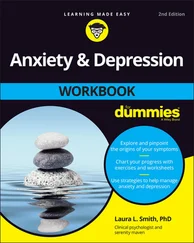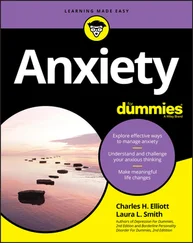How often do well‐intentioned helping professional engage in implicit biases toward clients of color?
41–83% of clients of color report at least experiencing one racial microaggression in therapy.
The most common forms of microaggressions were avoidance or minimization of cultural issues.
76% of the microaggressions experienced were never addressed in the sessions.
<50% of therapists could even recognize microaggressions.
Clients of color rated therapists who commit microaggressions or are unable to recognize them as less sensitive, less culturally competent, and less attuned to cultural issues.
The unconscious bias of helping professionals prevents or ruptures therapeutic alliances.
Source: Owen, Tao, and Drinane (2019).
EMOTIONAL SELF‐REVELATIONS AND FEARS: MAJORITY GROUP MEMBERS
As you will shortly see, the book's subject matter (a) deals with prejudice, bias, stereotyping, discrimination, and bigotry; (b) makes a strong case that counseling and psychotherapy may serve as instruments of cultural oppression rather than therapeutic liberation (Sue, 2015; Wendt, Gone, & Nagata, 2015); (c) indicates that well‐intentioned mental health professionals are not immune from inheriting the racial, gender, and other biases of the larger society (Owen, Tao, & Drinane, 2019); and (d) suggests therapists and trainees may be unconsciously biased toward clients from marginalized groups (Ratts & Pedersen, 2014).
Although supported by the research literature and by clinical observations and reports, these assertions can be quite disturbing to members of the majority group. If you are a majority group member and beginning the journey to developing cultural competence and cultural humility , you may share similar reactions to those of the students. Both White students, for example, are reacting with defensiveness, anger and resentment; they believe that the authors are unjustly accusing U.S. society and White Americans of racism, and claim the authors are themselves “racist” but of a different color. They may become defensive and actively resist and reject the content of the book. If these feelings persist throughout the course unabated, they will act as barriers to learning and further self‐exploration. However, what do these negative reactions mean to the students? Why are they so upset? Dr. Mark Kiselica (Sue & Sue, 2013, pp. 8–9), a White psychologist and former provost of a college in New York, writes about his own negative emotional reactions to reading the book during his graduate training. His personal and emotional reactions to the book provide us with some clues.
I was shaken to my core the first time I read Counseling the Culturally Different (now Counseling the Culturally Diverse) … At the time, I was a doctoral candidate at The Pennsylvania State University's counseling psychology program, and I had been reading Sue's book in preparation for my comprehensive examinations, which I was scheduled to take toward the end of the spring semester…
I wish I could tell you that I had acquired Sue's book because I was genuinely interested in learning about multicultural counseling … I am embarrassed to say, however, that that was not the case. I had purchased Sue's book purely out of necessity, figuring out that I had better read the book because I was likely to be asked a major question about cross‐cultural counseling on the comps. During the early and middle 1980s, taking a course in multicultural counseling was not a requirement in many graduate counseling programs, including mine, and I had decided not to take my department's pertinent course as an elective. I saw myself as a culturally sensitive person, and I concluded that the course wouldn't have much to offer me. Nevertheless, I understood that … the professor, who taught the course, would likely submit a question to the pool of materials being used to construct the comps. So, I prudently went to the university bookstore and purchased a copy … because that was the text … used for his course.
I didn't get very far with my highlighting and note‐taking before I started to react to Sue's book with great anger and disgust. Early on in the text, Sue blasted the mental health system for its historical mistreatment of people who were considered to be ethnic minorities in the United States. He especially took on White mental health professionals, charging them with a legacy of ethnocentric and racist beliefs and practices that had harmed people of color and made them leery of counselors, psychologists, and psychiatrists. It seemed that Sue didn't have a single good thing to say about White America. I was ticked off at him, and I resented that I had to read his book. However, I knew I had better complete his text and know the subject matter covered in it if I wanted to succeed on the examinations. So, out of necessity, I read on and struggled with the feelings that Sue's words stirred in me.
Cultural competence and humility in counseling/mental health practice demands that nested or embedded emotions associated with race, culture, gender, and other social identity differences be openly experienced and discussed. It is these intense feelings that often block our ability to hear the voices of those most oppressed and disempowered (Appiah, Eveland, Bullock, & Coduto, 2021). How we, as helping professionals, deal with these strong feelings can either enhance or impede a deeper understanding of ourselves as racial, ethnic, and cultural beings and our understanding of the worldviews of culturally diverse clients. Because Mark did not allow his defensiveness and anger to get the best of him, he was able to achieve insights into his own biases and false assumptions about People of Color. The following passage reveals the internal struggle that he courageously fought and the disturbing realization of his own racism.
I tried to make sense of my emotions—to ascertain why I was drawn back to Sue's book again and again in spite of my initial rejection of it. I know it may sound crazy, but I read certain sections of Sue's book repeatedly and then reflected on what was happening inside of me … I began to discover important lessons about myself, significant insights prompted by reading Sue's book that would shape the direction of my future … I now realized that Sue was right! The system had been destructive toward people of color, and although my ancestors and I had not directly been a part of that oppressive system, I had unknowingly contributed to it. I began to think about how I had viewed people of color throughout my life, and I had to admit to myself that I had unconsciously bought into the racist stereotypes about African Americans and Latinos. Yes, I had laughed at and told racist jokes. Yes, I had used the “N” word when referring to African Americans. Yes, I had been a racist. Sue's book forced me to remove my blinders. He helped me to see that I was both a product and an architect of a racist culture. (Sue & Sue, 2013, pp. 9–10)
Years after first reading the book, Mark Kiselica (1999) talks about his racial awakening and identifies some of the major fears many well‐intentioned White Americans struggle with as they begin studying racism, sexism, or heterosexism on a personal level. This passage, perhaps, identifies the major psychological obstacle that confronts many White Americans as they process the content and meaning of the book.
You see, the subjects I [White psychologist] am about to discuss—ethnocentrism and racism, including my own racism—are topics that most Whites tend to avoid. We shy away from discussing these issues for many reasons: We are racked with guilt over the way people of color have been treated in our nation; we fear that we will be accused of mistreating others; we particularly fear being called the “R” word—racist—so we grow uneasy whenever issues of race emerge; and we tend to back away, change the subject, respond defensively, assert our innocence and our “color blindness,” denying that we could possibly be ethnocentric or racist. (p. 14)
Читать дальше












